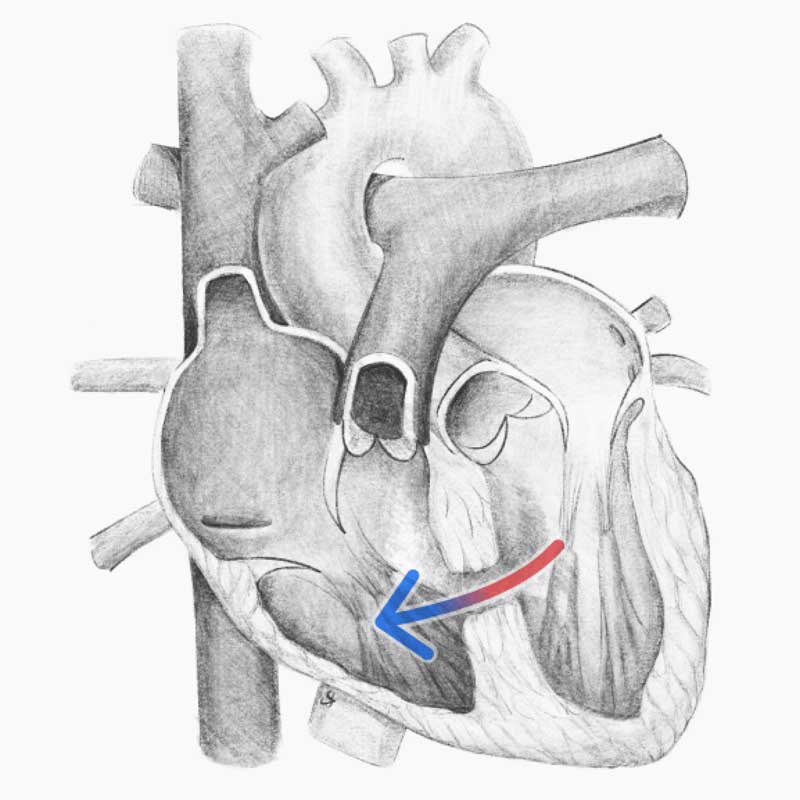Ventricular Septal Defect (VSD)

Overview
Ventricular Septal Defect (VSD) is an abnormal opening between the right and left ventricle, and is a common heart defect present at birth. This opening causes oxygen-rich blood to leak from the left to right ventricle and be pumped to the lungs instead of out to the body. This lowers the efficiency of the heart, causing it to work harder to increase blood flow to the rest of the body. A small VSD may cause no symptoms and close spontaneously. Larger VSDs can cause complications and may require surgery to prevent long-term complications.
Pathophysiology
During the first 8 weeks of fetal development, the heart begins to form as a hollow tube, then partitions within the tube to develop the septa (walls) dividing the right and left ventricles. VSDs occur when the partitioning process is incomplete, leaving an opening in the ventricular septum. The opening occurs allows blood to leak from the left ventricle into the right ventricle, passing through the pulmonary circulation and re-entering the left ventricle. This reflux of blood causes elevated right ventricular pressure and volume, resulting in pulmonary hypertension, and volume overload of the left ventricle.

Audio
A holosystolic murmur best heard over the lower left sternal border, radiating to the right sternal border. Small defects produce harsh and loud murmurs, while large defects produce softer, less intense murmurs.

ECG
If the VSD is small, ECG is typically normal. If the VSD is large, ECG may show left ventricular hypertrophy.
Actual recording
This sound was recorded using a stethoscope powered by Eko technology.
Medical Advice Disclaimer
DISCLAIMER: THE CONTENT SET FORTH HEREIN DOES NOT PROVIDE MEDICAL ADVICE NOR IS AN ATTEMPT TO PRACTICE MEDICINE
The information, including but not limited to, text, graphics, images, and other material contained on this website are for informational purposes only. No material on this website or document are intended to be a substitute for professional medical education, advice, diagnosis, or treatment.
